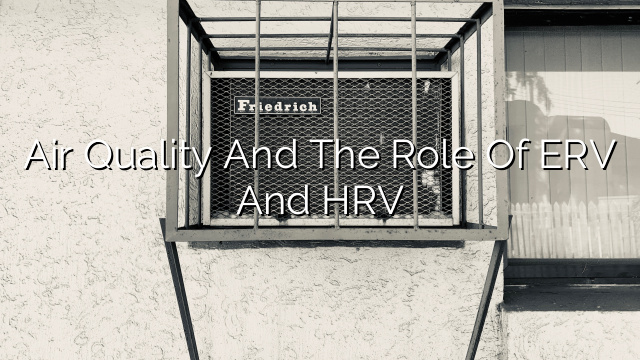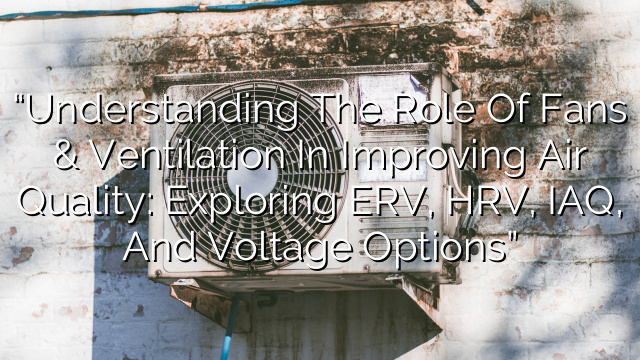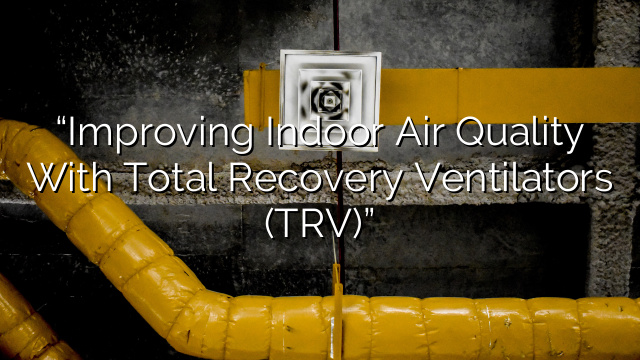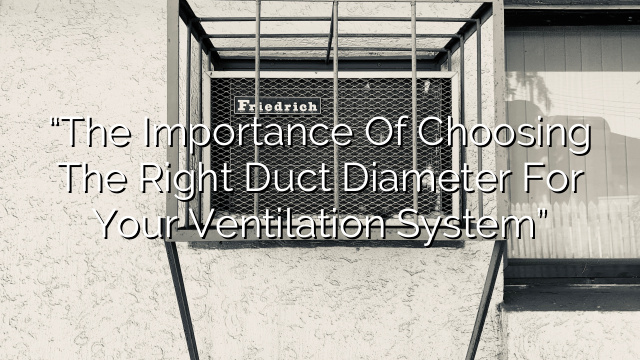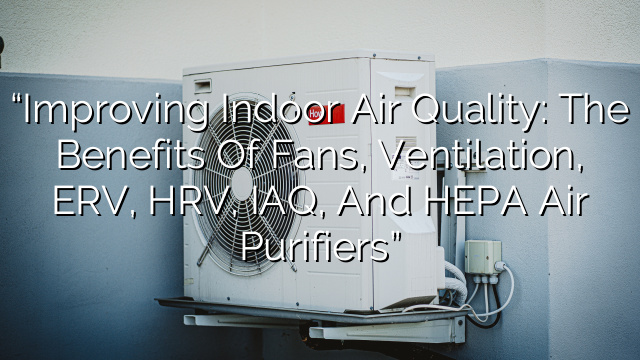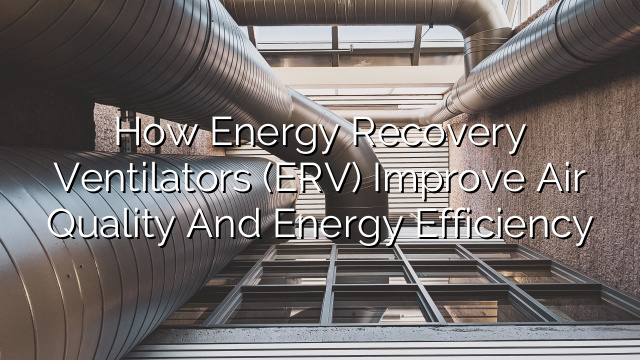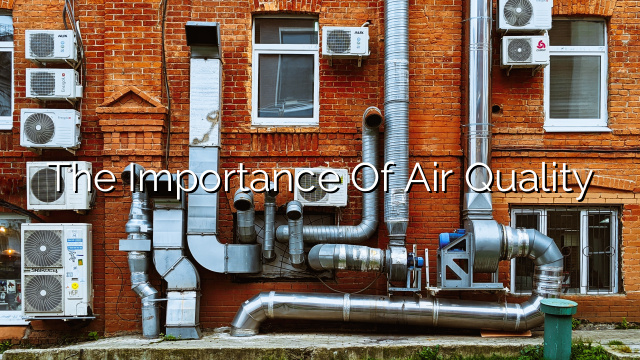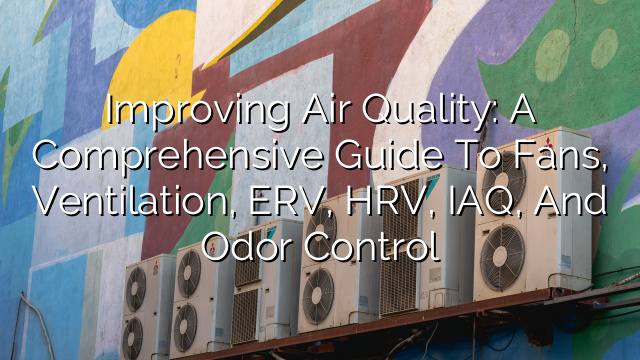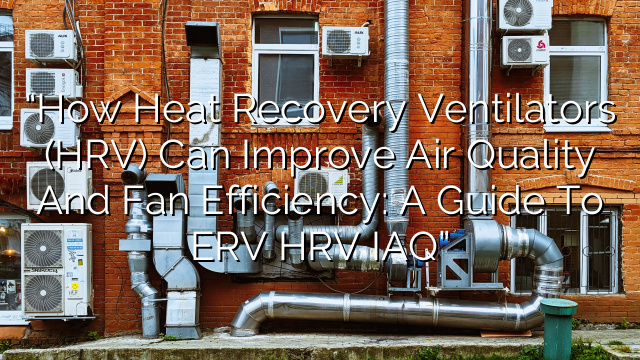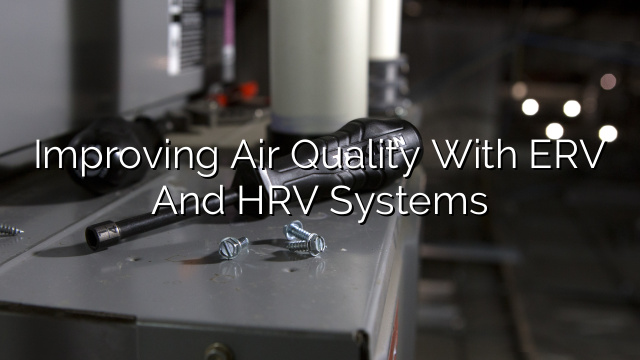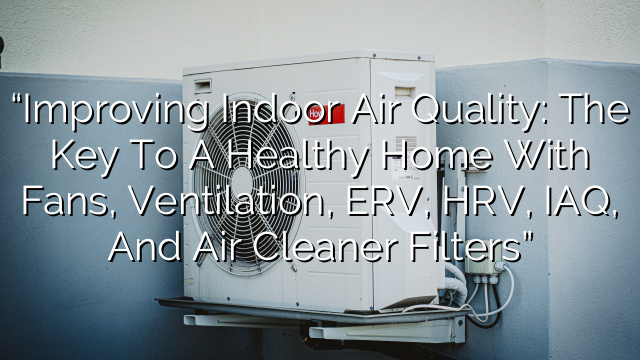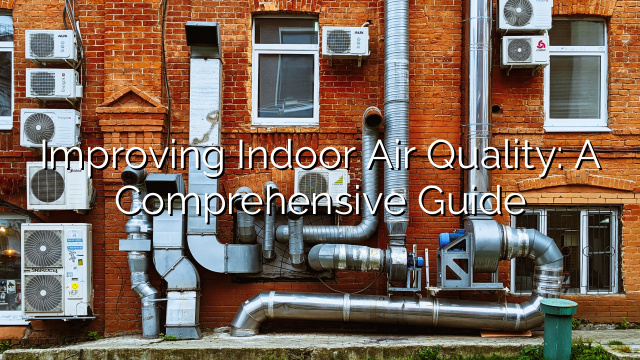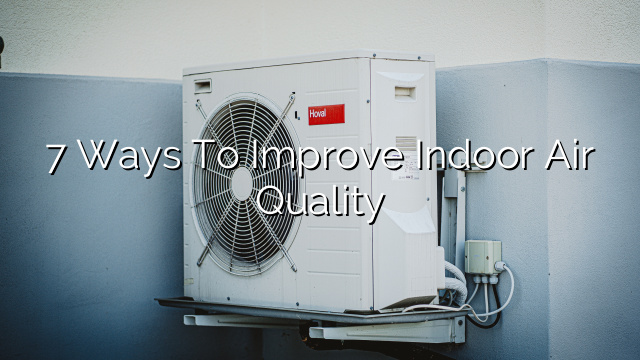Air Quality and the Role of ERV and HRV
Air quality has become an increasing concern in recent years, as more and more people are becoming aware of the impact that indoor air pollution can have on their health. Poor air quality can lead to a range of health issues, including allergies, asthma, and other respiratory problems. It can also contribute to fatigue, headaches, and difficulty concentrating. Luckily, there are ways to improve indoor air quality, and one of the most effective methods is through the use of energy recovery ventilation (ERV) and heat recovery ventilation (HRV) systems. In this blog post, we will explore the role of ERV and HRV in improving air quality and creating a healthier indoor environment.
The Importance of Indoor Air Quality
Many people may not realize it, but the air inside our homes and buildings can be more polluted than the air outside. This is due to a variety of factors, including the presence of pollutants such as dust, pet dander, mold spores, and volatile organic compounds (VOCs) emitted by household products. In addition, modern buildings are often constructed to be airtight, which can lead to poor ventilation and a buildup of stagnant air.
Poor indoor air quality can have a significant impact on our health. Studies have shown that indoor air pollution can increase the risk of developing respiratory diseases, cardiovascular problems, and even certain types of cancer. It can also exacerbate the symptoms of existing conditions, such as asthma and allergies. Therefore, it is crucial to take steps to improve indoor air quality and create a healthier living environment.
The Role of ERV and HRV
Energy recovery ventilation (ERV) and heat recovery ventilation (HRV) systems play a vital role in improving indoor air quality. These systems are designed to provide a constant supply of fresh air while recovering the energy from the outgoing air. They work by using a heat exchanger to transfer the heat or coolness from the exhaust air to the incoming fresh air, without actually mixing the two streams. This not only helps to maintain a comfortable indoor temperature but also prevents the loss of conditioned air, resulting in energy savings.
But how do ERV and HRV systems improve air quality? The answer lies in their ability to provide a constant supply of fresh air while removing stale air and pollutants from the indoor environment. By continuously exchanging the indoor air with fresh outside air, these ventilation systems help to remove pollutants and odors, ensuring a constant flow of clean and healthy air throughout the space. This is especially important in tightly sealed buildings, where natural ventilation may be limited or nonexistent.
The Benefits of ERV and HRV
Investing in an ERV or HRV system can provide a range of benefits, including:
- Improved Air Quality: ERV and HRV systems remove pollutants, allergens, and other irritants from the indoor environment, improving air quality and reducing the risk of health problems.
- Energy Savings: By recovering the heat or coolness of the exhaust air, these systems help to reduce the load on heating and cooling systems, resulting in energy savings and lower utility bills.
- Comfort: ERV and HRV systems help to maintain a constant indoor temperature and humidity level, providing a comfortable living environment.
- Noise Reduction: These ventilation systems can help to reduce noise from outdoor sources by keeping windows closed while still allowing for fresh air circulation.
- Condensation Control: ERV and HRV systems can help to control moisture levels, reducing the risk of condensation and mold growth in the building.
Overall, investing in an ERV or HRV system is a smart choice for anyone looking to improve indoor air quality, save energy, and create a healthier living environment.
Frequently Asked Questions
- Q: How often should I change the filters in my ERV or HRV system?
A: It is recommended to change the filters in your ERV or HRV system at least once every three to six months, or more frequently if you have pets or suffer from allergies. Regular filter changes will help to ensure the system functions effectively and maintains good air quality.
- Q: Can I install an ERV or HRV system myself?
A: While it is possible to install an ERV or HRV system yourself, it is recommended to hire a professional HVAC technician for the installation. They will have the expertise and knowledge to ensure the system is properly installed and functioning correctly.
- Q: Will an ERV or HRV system increase my energy consumption?
A: No, an ERV or HRV system will not increase your energy consumption. In fact, these systems are designed to recover the energy from the exhaust air and use it to precondition the incoming fresh air, resulting in energy savings.
- Q: Are ERV or HRV systems noisy?
A: ERV and HRV systems are designed to operate quietly, and most models include noise reduction features. However, it is important to choose a high-quality system and have it properly installed to ensure minimal noise.

